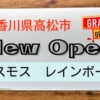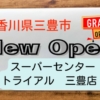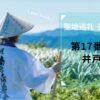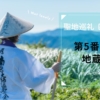【Japan tourism】 Shikoku 88 temple pilgrimage trip [No.53] Sugasan syoutiin Enmyouji
Japan’s oldest copper plate bill with the characters “Pilgrimage" written on it has been preserved. In 1924 (Taisho 13), an American pilgrim discovered.
Enmeiji
| Principal image | Amida Nyorai |
| Honzon mantra | On amirita teisei karaun |
| Denomination | Shingon Buddhism Tizan sect |
Place
Temple lodging: none
Phone:089-978-1129
〒799-2656
1-182 Wakecho, Matsuyama City, Ehime Prefecture
Gosyuin(red stamp)
Please wait a moment until the image is uploaded.
History
Japan’s oldest copper plate bill with the characters “Henro" written on it has been preserved. In 1924 (Taisho 13), an American pilgrim discovered that it was nailed to the zushi that enshrined the temple’s principal image.
It is written in the 3rd year of Keian (1650). It is 24 cm long, 9.7 cm wide, and 1 mm thick, and is the oldest undamaged copper plate in existence. Of particular note is the fact that it is the first Osamefuda on which the characters [Henro] are written.
The dedicator, Hirahitoietugu Higuchi, is known for having built the Gochi Nyorai Stone Buddha by rebuilding the monastery of Gochizan Rengeji Temple in Kyoto.
At the request of Emperor Shomu, Gyoki enshrined the principal image of Amida Nyorai, Kanzeon Bodhisattva and Seishi Bodhisattva as attendants, and built the temple as a large temple with seven halls. It is said that it was named 'Kaigan-san Enmyomitsuji’ because it was located on the coast of Nishiyama in Wakehama at that time.
The temple later fell into disrepair, but Kobo Daishi restored the hall and rebuilt it as a sacred place in Shikoku.
In the Kamakura period, it was destroyed again by repeated war fires, and it is said that Shigehisa Suga, a local ruling family, relocated it to its current location during the Genna era (1615-1624).
In 1936 (Kanei 13), it was rebuilt as a direct subordinate temple of Ninna-ji Temple under the order of Imperial Prince Kakushin of Kyoto Omuro, and the name of the temple was changed to the current 'Enmyoji’.
Highlight
【Christian Stone Pagoda】Built between 1624 and 1644, this 40 cm high lantern is said to represent a cross. A figure resembling the Virgin Mary is also carved, and there were many believers in this region during the time when Christianity was prohibited, and it seems that the worship of hidden believers was tolerated at the temple.
【Dragon by Hidari Jingoro】It is a carving of a dragon about 5m in the Kamoi at the lower right of the main hall. It is said that the eyes of a dragon light up when a person with bad deeds sees it.
It is about 38 km (about 1 hour by car) to the next 54th bill place “Enmeiji"!










